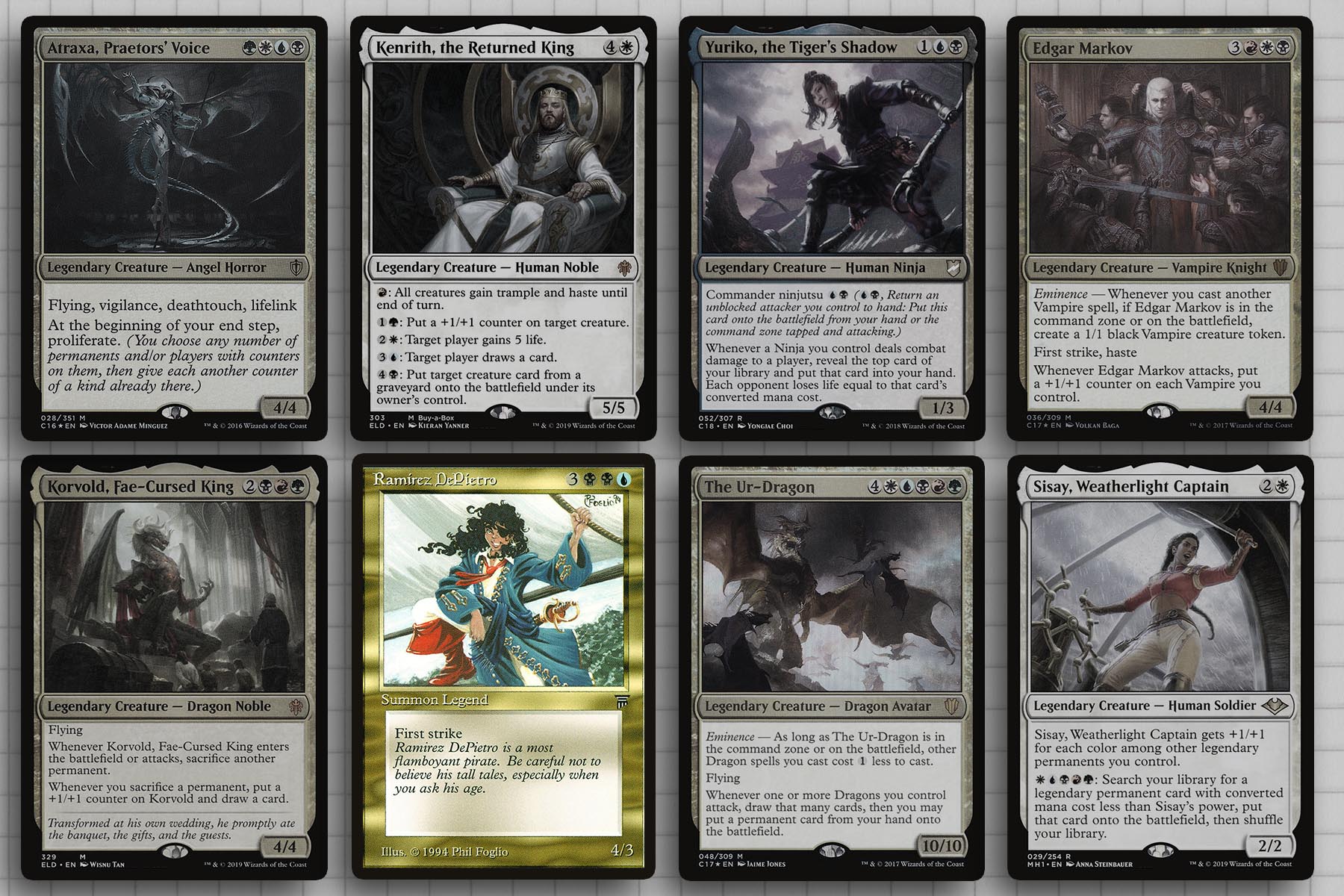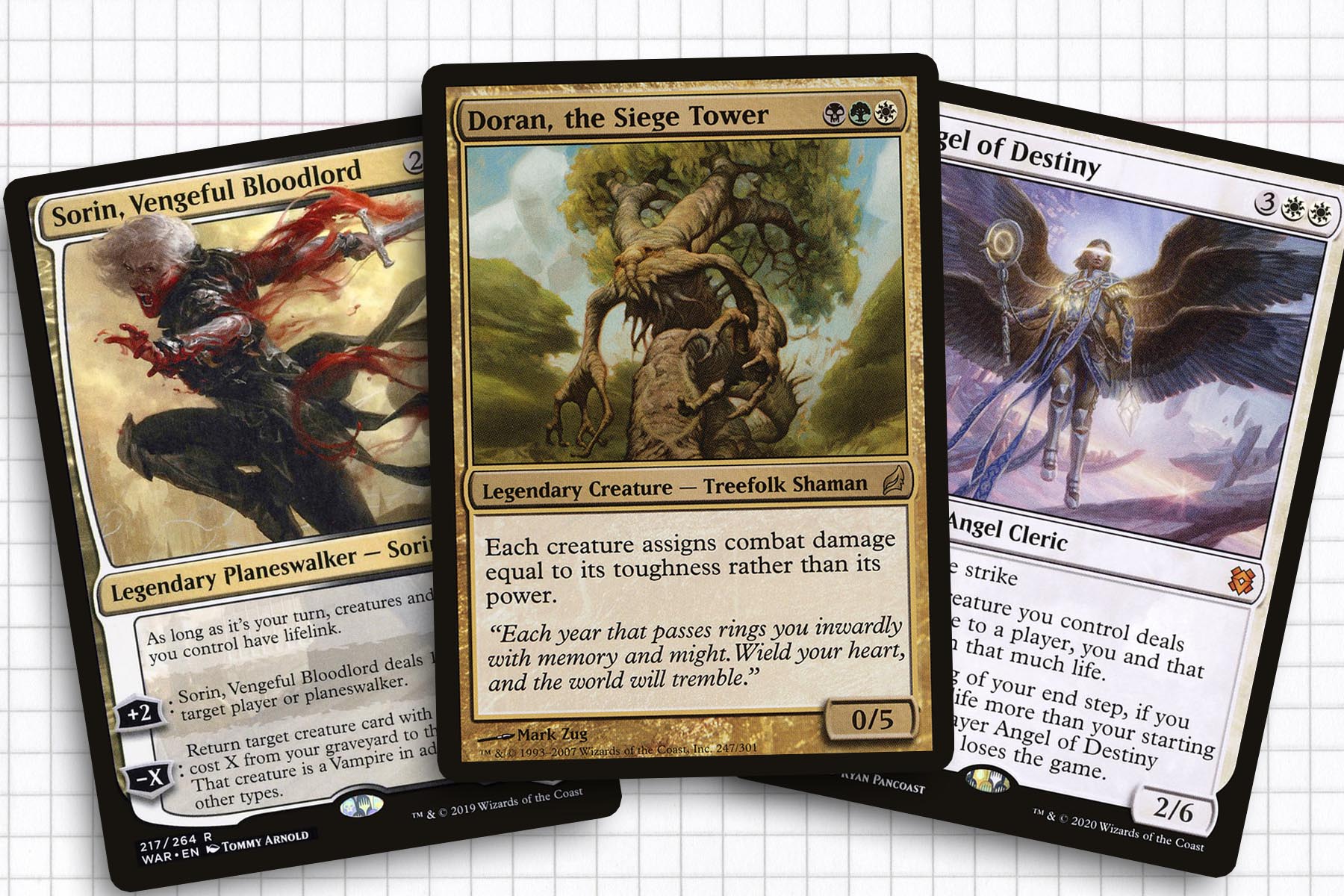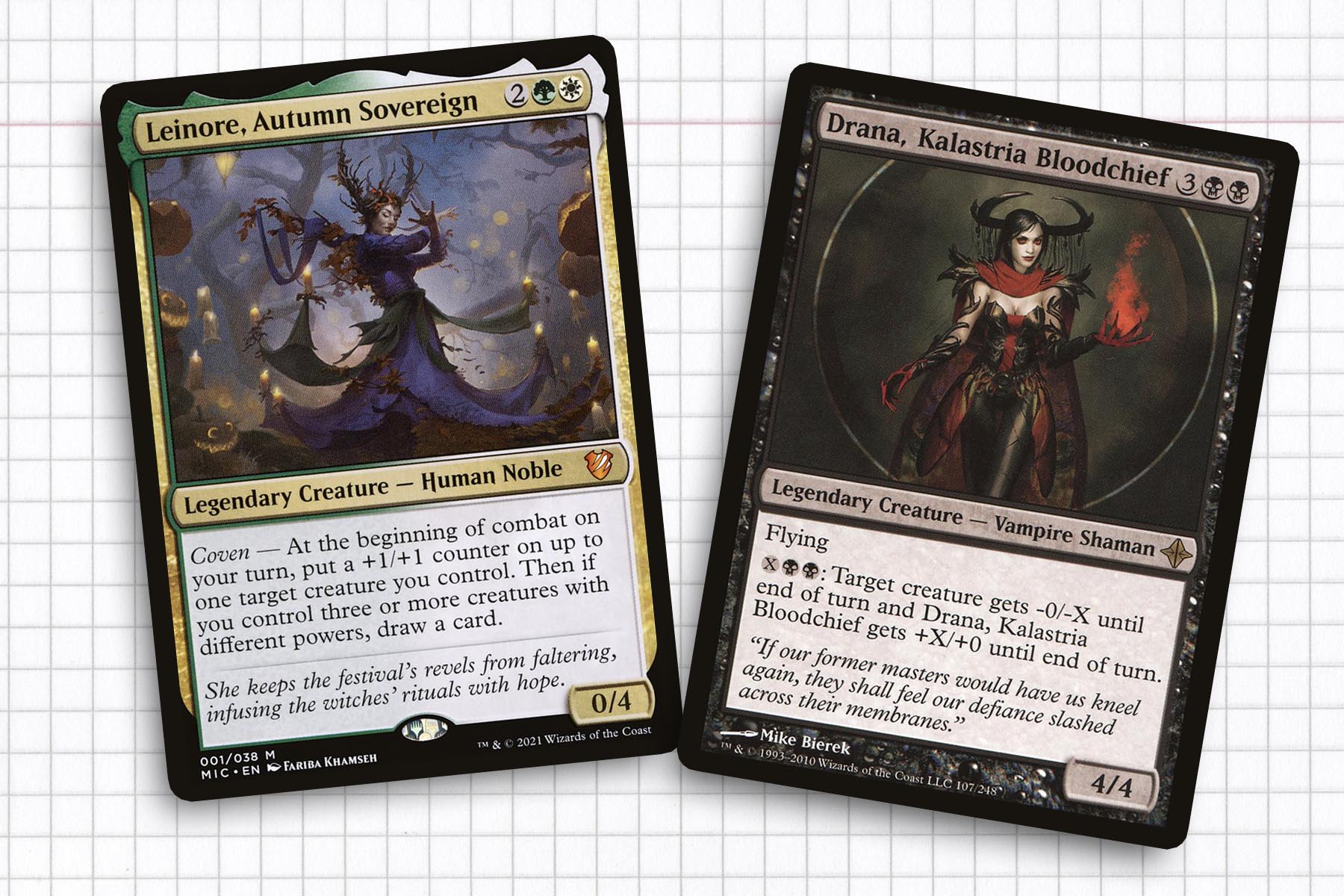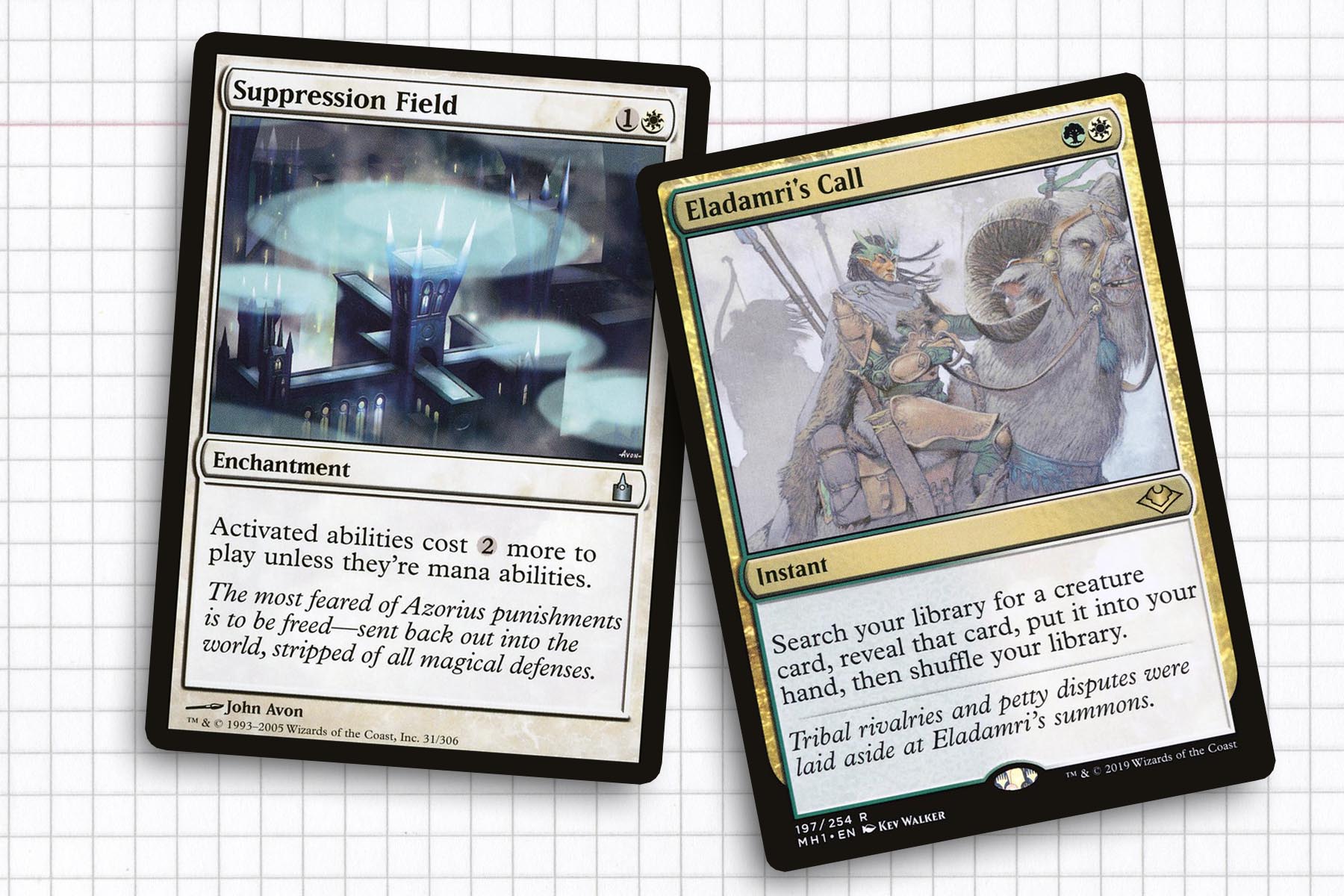One of the aspects of Magic that I have come to realize that I miss over the last few years is the talk of strategy within competitive formats. There was a time when I engrossed myself on weekly Standard discussions, as well as Modern and Legacy—even though I never played more than a handful of matches in those formats in any given year. But not these days, for a few reasons: the lack of large tournaments, my lack of time to absorb the more strategy-minded thinking that we currently have, and my current unhappiness with formats like Standard, Historic, and Alchemy.
My love for strategy fed into some of the higher level thinking that I have adapted into my views of Commander. Obviously, tempo and card advantage are factors, but are not going to weigh as much on a given game of Commander as they might in a format where your opponents objective is to make you lose the game as quickly as possible. But there is always been something compelling to me about applying the lessons learned in other formats to Commander, to not only improve my gameplay, but also my deckbuilding and social politics. This is where today’s topic, the art of defying expectations, comes into play.

Defying Expectations
As far as I see it, there is a lot of value that can be generated from your opponents being deceived by your game play. Deception can manifest in many ways: breaking tension by responding to, “cards in hand?” with “six Forest” while playing a Blind Seer deck, keeping untapped lands to feign interaction, or playing a general that doesn’t land in the 100 generals on EDHrec. While I don’t expect that most players know the full deck list for Yuriko, the Tiger’s Shadow, most will probably expect that Changeling Outcast will be the harbinger of Ink-Eyes, Servant of Oni, revealing the seven-mana value spell scryed to the top of the library. But what are they to expect when Belbe, Corrupted Observer gets revealed before a game?
The ability to deceive and undermine expectations is one of the reasons I love Commander, letting the uninitiated at the table assume they know what archetype, removal, or creature suite I am playing. Savvy players wander down the wrong decision path, thinking they are counteracting a strategy, when they are really wasting time and mana. That feeling when an opponent overcommits creatures to the battlefield against Shattergang Brothers, thinking I’m going to force them to sacrifice creatures, only to be blown out by Spreading Plague. Or when the Gonti, Lord of Luxury player casts Praetor’s Grasp on my Jodah, Archmage Eternal deck, expecting to find Ruinous Ultimatum or Avacyn, Angel of Hope, only to find binder rares like Simic Sky Swallower and Flying Crane Technique.
This is where the deck I want to look at today comes into focus. The Doran, the Siege Tower deck that I have written about previously is emblematic of this philosophy of defied expectations. Not only is the general a more retro pick, but what it is best known for is not how I chose to construct the deck. For the most part, at least. This results in an experience that most are not ready for when they first play against the deck, while also leveraging the asymmetrical design of Doran. The deck has come a long way since I spoke on it nearly three and a half years ago, so I’m excited to discuss its current state.
Commander: Doran, the Siege Tower
Creatures: Angel of Destiny, Arboreal Grazer, Archangel of Thune, Auriok Champion, Ayli, Eternal Pilgrim, Baneslayer Angel, Blood Artist, Danitha Capashen, Paragon, Den Protector, Drana, Kalastria Bloodchief, Erebos, God of the Dead, Ikra Shidiqi, the Usurper, Karlov of the Ghost Council, Kitchen Finks, Leinore, Autumn Sovereign, Loaming Shaman, Nykthos Paragon, Oracle of Mul Daya, Rhox Faithmender, Suncleanser, Timeless Witness, Tymna the Weaver, Wickerbough Elder, Woodfall Primus
Artifacts: Aetherflux Reservoir, Behemoth Sledge, Commander’s Sphere, Darksteel Ingot, Lightning Greaves, Mind’s Eye, Shadowspear, Swiftfoot Boots, Sword of the Animist
Enchantments: Armadillo Cloak, Asceticism, Boon Reflection, Cunning Rhetoric, Dawn of Hope, Dictate of Heliod, Force of Virtue, Greed, Lignify, Privileged Position, Suppression Field, True Conviction, Unflinching Courage
Planeswalker: Sorin, Vengeful Bloodlord
Instants: Eladamri’s Call, Fracture, Hero’s Downfall, Scout’s Warning
Sorceries: Armageddon, Celestial Judgment, Council’s Judgment, Demonic Tutor, Farseek, Fraying Omnipotence, Genesis Wave, Nature’s Lore, Rout, Skyshroud Claim, Slaughter the Strong, Toxic Deluge
Lands: 3 Forest, 6 Plains, 2 Swamp, Blooming Marsh, Bojuka Bog, Command Tower, Concealed Courtyard, Fortified Village, Godless Shrine, Hissing Quagmire, Indatha Triome, Isolated Chapel, Krosan Verge, Murmuring Bosk, Nantuko Monastery, Necroblossom Snarl, Overgrown Tomb, Razorverge Thicket, Sandsteppe Citadel, Shambling Vent, Shineshadow Snarl, Shizo, Death’s Storehouse, Stirring Wildwood, Sunpetal Grove, Temple Garden, Throne of the High City, Witch’s Clinic, Woodland Cemetery

Humble Beginnings, Unexpected Growth
As I have discussed previously, the original intention for this deck was to try to make Soul Sisters exist in Commander. The initial Green/White build with Trostani, Selesnya’s Voice wasn’t getting the results I was looking for and I was soon finding myself adding in Black for the deep card pool that used life as a resource, like Erebos, God of the Dead, Greed, and Phyrexian Arena. The deck became a favorite of mine over the years, ever-evolving and always in rotation as I packed for each game night.
What’s become a little bewildering over the last few years is that new cards have not always come from where I might have expected them to come from. As an example, for a set with a life gain theme within the color identity, I found very few cards that I wanted to include in this deck out of Strixhaven. Instead, cards like Ageless Entity and Felidar Sovereign were replaced by Nykthos Paragon and Angel of Destiny. I even tried out Valentin, Dean of the Vein and Lisette, Dean of the Root, but later found Leinore, Autumn Sovereign did more for the deck than I was getting from the modal double-faced legends.
This intimate knowledge of the goings-on of the deck only adds to the expectation shattering element of the deck. Once someone knows Doran is a front for a lifegain deck, they may assume the deck will combo off with Vito, Thorn of the Dusk Rose and Exquisite Blood; but that was always an unsatisfying victory that made the previous hour of gameplay mean little to nothing. On the flip side, Sorin, Vengeful Bloodlord reanimating Rhox Faithmender often leads to swings in life that take me off death’s door and cause opponents to wish they removed me when they had the chance.

Anything but Average
This build of Doran currently has 74 unique cards in it when compared to the average Doran deck. Once again, this is why I love Commander: neither direction for the deck is incorrect, but mine happens to feed into a direction I wanted to pursue. Heck, I only really chose Doran because an obstensive five-power creature for three mana seemed like a good candidate for wielding Loxodon Warhammer in 2014. And even once a table knows that I have modeled the deck around continuous life gain, they still underestimate the deck’s reach, because they fall prey to the stigma against lifegain in the format.
Over time, the deck has adapted to the changing metagame, trading Loxodon Warhammer for Shadowspear and even moving away from the more Voltron-minded inclusions like Alpha Authority and Canopy Cover, for go-wide supporting spells like Leinore, Autumn Sovereign and Nykthos Paragon. Yet the deck still maintains the life gain theme, with a core that includes Archangel of Thune, Ayli, Eternal Pilgrim, and Ikra Shidiqi, the Usurper. The typical lifelink auras, Armadillo Cloak and Unflinching Courage, now act more as cards to buy me an extra turn or insure damage, instead of being expected to stay in play for half a dozen turns.
All of this while still fostering the tool box aspects of the deck, which I always felt built some resilience into the list. While people may be aware of a card like Asceticism, they are often not prepared for their removal to be compromised by Privileged Position or their planeswalkers and utility creatures to be hampered by Suppression Field. The spread of different powers through my creature base meant that Celestial Judgment found a home here, replacing Hallowed Burial. And Suncleanser remains one of the most niche cards in the deck, but game defining against generals like Skithiryx, the Blight Dragon, Ezuri, Claw of Progress, or Brallin, Skyshark Rider and Shabraz, the Skyshark.

The Intangibles of EDH
For all the hot air I can blow in regards to game theory, I think the important thing to remember is that Commander is a format that can reward a lot of fun if you’re looking for it. My favorite games with this deck will always be the ones that I was able to survive by the skin of my teeth, even if I took second place. I like to believe that a lot of the good luck that I’ve had has come from players underestimating just what I am capable of and defining the deck not by the cards that are present in the deck, but the ones that they are expecting. You can play into this by bluffing cards that they expect, but sometimes that can be your downfall, when you don’t have the goods.
Combining an aspect of Commander strategy with a deck discussion is a format that I hope to continue as I revisit decks that I’ve already talked about previously. Allowing decks to grow and change over a year or two and coupling them with a larger thought seems like a valid way to better drive a discussion home and I hope that over time, it can inspire even bigger ideas. Until next time, thanks for reading.
Ryan Sainio is a Graphic Designer who writes about EDH and the EDH community. He has been playing Magic: the Gathering since 7th Edition in 2002 and values flavorful and fun gameplay over competitively optimized decks.

